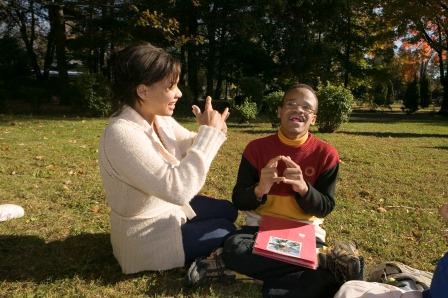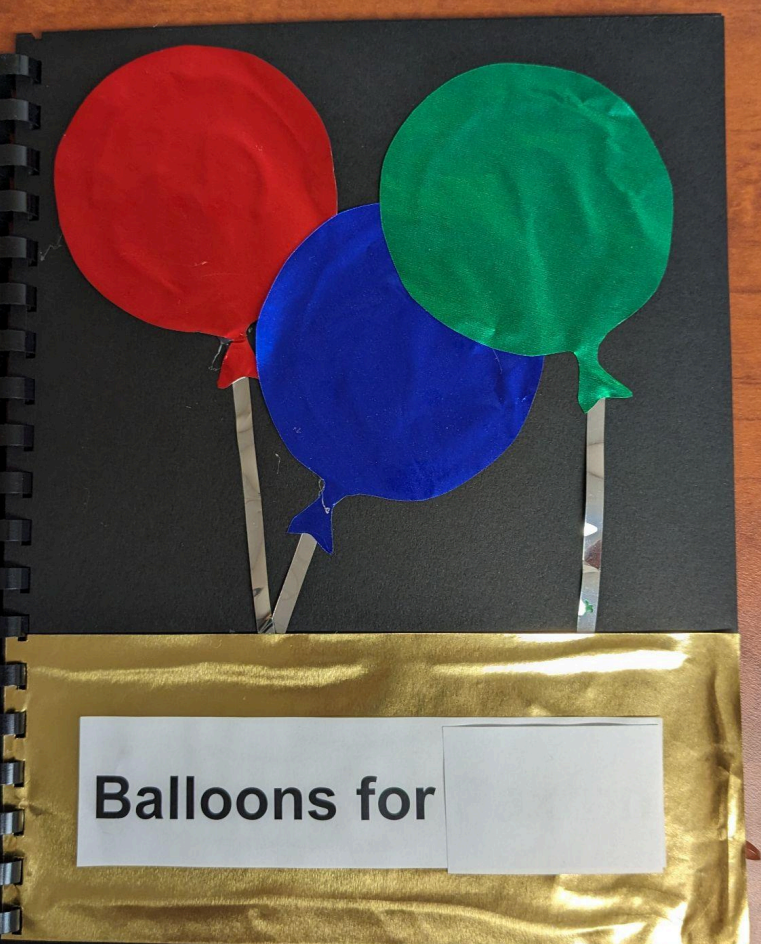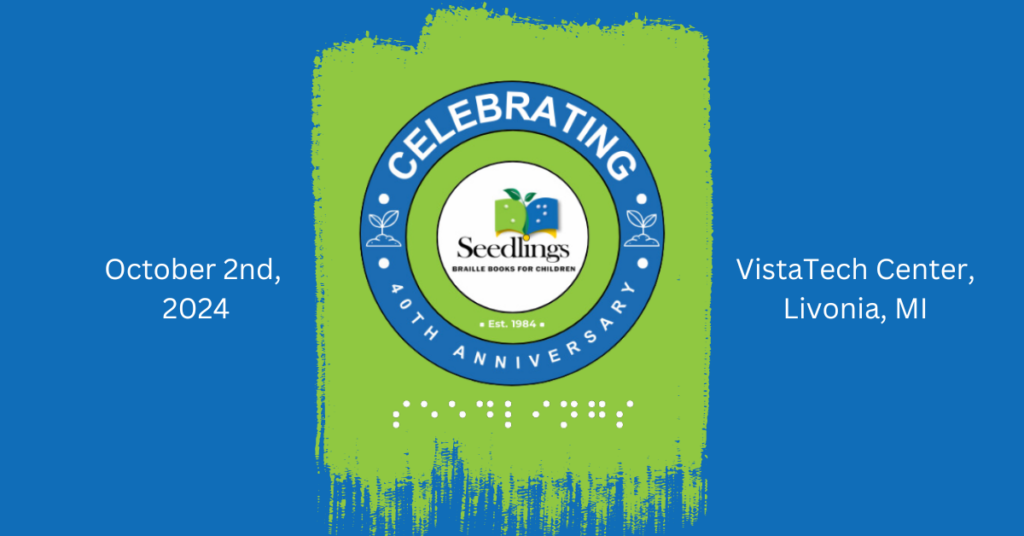
Accessing the Curriculum Frameworks through English Language Arts: Literacy (pp. 4-6)
By Martha M. Majors, Assistant Supervisor, Perkins Deafblind Program, Perkins School for the Blind
From In Touch: The Newsletter of the New England Deafblind Project (Vol. 6, Issue 4, February 2008)
What Is Literacy?
In the past, literacy used to be considered the “ability to read and write.” Today, the definition has gotten broader to include speaking, listening, concepts, and contexts in which all children can learn (Wright, 1997). For students who are deafblind, it is now seen more as a process in which proficiency is not necessarily the final outcome; however, exposure and access to language are seen as the more ideal or meaningful result.
Literacy Is More Than An Open Book
For many people, the word literacy brings up images of someone reading a book from the library, writing a letter or reading the newspaper.
Now think about a student touching a cup that is mounted on the wall at the entrance to the cafeteria to know that he is in the correct place to have his lunch; a child taking a bathing suit from her object calendar to tell her teacher that she wants to go swimming; a young man pointing to a picture of a hamburger in his communication wallet to place his order at McDonalds. These are all examples that literacy is a communication tool that takes many forms.
Children who are sighted and hearing are continually exposed to language and begin developing literacy skills from infancy, long before they are formally taught reading and writing at school. Most preschool age children know that the word on the red, octagonal street sign is STOP or that the sign over the door at the movie theater is EXIT. They are immersed in a literacy rich world that they can easily access.
For a child who is blind or deafblind, literacy skills are limited because of their reduced access to the visual and hearing world. Often, the stories that are read to them can only be heard. They may know that their parent is turning pages of the book, but may not know that there are printed words on those pages.
Literacy is the understanding that symbols represent objects, events, concepts, people, and ideas. It must be carefully taught to all children, but especially to children who are blind, deafblind or have additional disabilities.
What is Literacy Competency?
Literacy competency is one of the main goals in all educational settings, beginning in preschool through higher education. Typical students begin to learn literacy skills at a young age by overhearing and observing the adults around them. Students who are deafblind show significant delays in the development of literacy due to limited or poor access to typical literacy materials such as books. This article will highlight the works of a group of teachers in the Deafblind Program at Perkins School for the Blind and their focus on the new definitions of literacy, samples of literacy-based IEP goals that are aligned with the state curriculum, and the functions of literacy.
How can a literacy program for students with deafblindness or multiple disabilities be aligned with the state’s Curriculum Frameworks?
As a result of the Educational Reform Act in Massachusetts, all schools were presented the challenge of aligning their school-based curriculum with the statewide curriculum known as the Massachusetts Curriculum Frameworks. One of the first and most important curriculums to be developed was English Language Arts. This is deemed the basic foundation for all text based subject areas including but not limited to History and Social Science and Science and Technology/Engineering. Students who are deafblind do not have easy access to this curriculum without significant adaptations and content modifications. The staff in the Deafblind Program at Perkins School for the Blind took on two significant challenges: 1) the task of defining literacy with students who have a combined vision and hearing loss as well as other multiple learning challenges and 2) the task of aligning curriculum, IEP goals and objectives with the Curriculum Frameworks. The goal was to create access to the English Language Arts Curriculum at the highest, most challenging, and most appropriate level for each student. As part of this process, access to literacy skills were broken down into specific skills that include: matching, sorting, sequencing, and organizational skills. Once the student has begun to learn these basic skills he/she is on the road to learning about literacy in what would seem “unconventional” ways. In fact these skills are from a practical and functional point of view, very effective. These basic skills are the foundation for all of us in everyday life; following directions, following sequences such as getting dressed, doing laundry, following a recipe, and yes, reading. The staff began to focus specifically on writing IEP goals and objectives based on the skills mentioned above and based on literacy/English Language Arts standards taken directly from the Curriculum Frameworks. As a result, every IEP is now a literacy-based IEP.
With the consistent access to the Curriculum Frameworks that is now being practiced, teachers are now accessing more standards from the curriculum in all subject areas. This has “raised the bar” for teachers in using these ideas to create meaningful content that is based on communication, language development, and access to literacy. In addition, these skills are being generalized to other literacy-based subject areas including Science and Technology/Engineering, Mathematics, and History and Social Science. Students now have increased access to information daily and use several modes of literacy specifically adapted for them.
Examples of IEP goals aligned to state standards
As staff began to align the goals and objectives with the Massachusetts Curriculum Frameworks, they also used the content for the Alternate Assessment/Portfolio for their students. There are many examples of goals in the IEP directly related to specific MCAS Alternate Assessment standards.
STUDENT A
Subject Area: English Language Arts
Strand: Reading and Literature
General Standard 8, Understanding a Text: Students will identify the basic facts and main ideas in
a text.
Essence(s): identify main event, retell a story, identify what will happen next
Access Skills: Respond to text read aloud, turn pages in a book, orient books right side up
IEP Goal: The student will interact with and use books
Relationship to Literacy: skills of matching words to pictures, sequence a story using pictures,
answer simple questions about a story
STUDENT B
Subject Area: English Language Arts
Strand: Language
General Standard 1, Discussion: Student will use agreed-upon rules for informal and formal
discussions in small and large groups.
Essence: participate in turn taking activities
Access Skill: Grasp, release, and manipulate objects, take turns as appropriate, apply rules for
appropriate classroom behavior
IEP Goal: Using a picture communication system the student will participate in interactions by
handing a picture of something she wants to a communication partner and wait for a response.
Relationship to Literacy: this is an early reading skill in that the picture is symbolic and represents
an idea
STUDENT C
Subject Area: English Language Arts
Strand: Composition
General Standard 19, Writing: Students will write with a clear focus, coherent organization, and
sufficient detail.
Essence: Use pictures, letters, or words to tell a story
IEP Goal: The student will compose daily journals and letters in their primary mode of
communication.
New Ideas and New Definitions of Literacy
Once staff began to review materials in the environment they realized that many of the materials as well as strategies being used were in fact literacy based. For example, the use of a calendar system/schedule system is basically a simple lesson in reading; the calendar system is symbol based (object, picture, MJ, etc.) and basically includes the skills: following a sequence, working from left to right, and matching. These are prerequisites for reading and as a student learns about the use of a calendar, their literacy skills increase. Another example is following a sequence using MJ symbols to demonstrate hand washing. Since this requires working from left to right in a sequence, it is also considered an early literacy skill.
These examples demonstrate how learning literacy can be defined as “non-conventional” but very effective for students who are deafblind. Students learn the names, the skills, and the concepts while being taught using total communication. So as they begin to “read” a symbol, they also learn the communication, the sign for the symbol. In this way, the student has maximum opportunities to learn how to communicate both receptively and expressively and simultaneously learning how to “read” using a variety of modes.
Resources:
Resource Guide to the Massachusetts Curriculum Frameworks for Students with Disabilities (2006)
Contributing Author: Marianne Riggio



